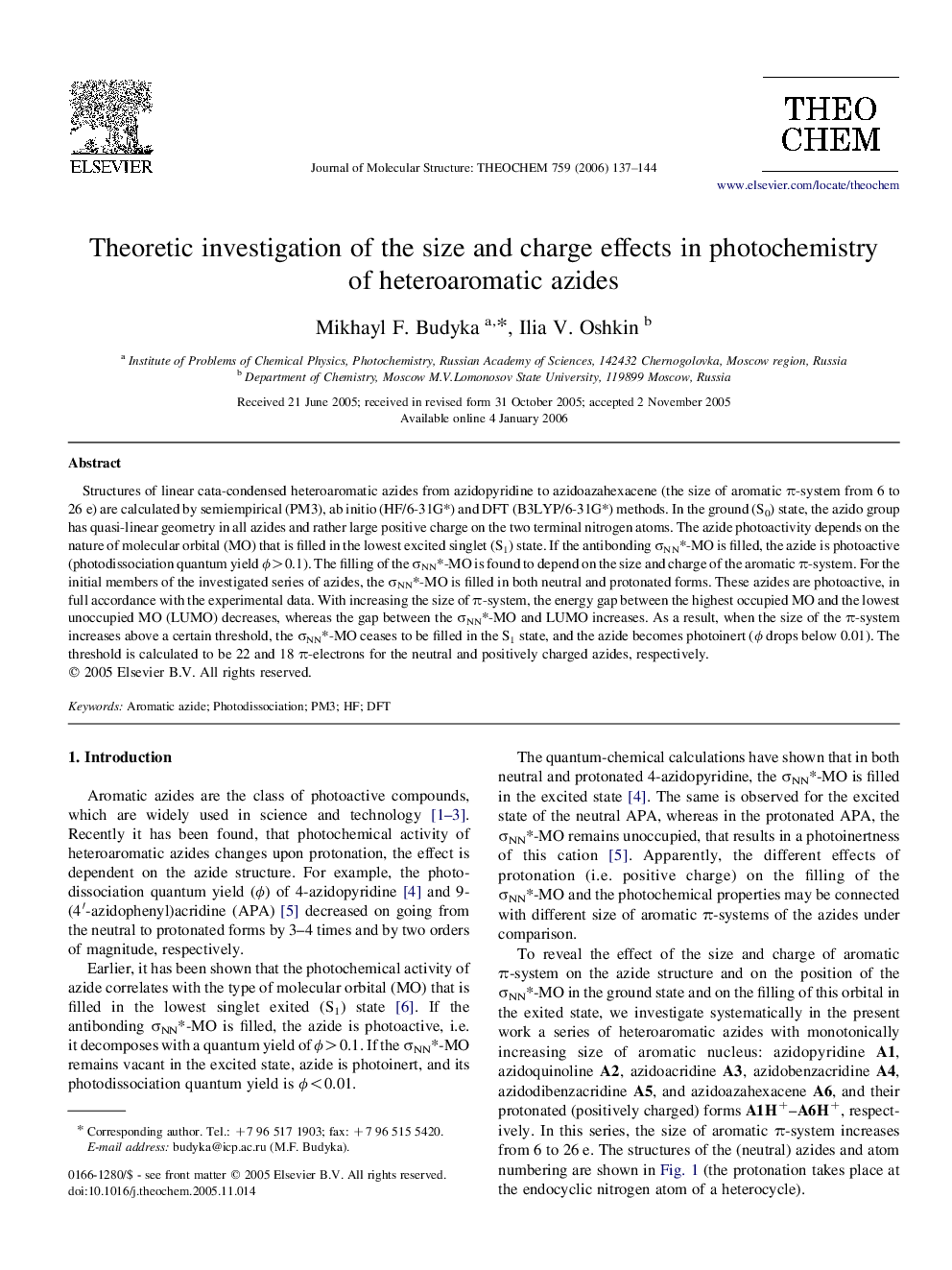| Article ID | Journal | Published Year | Pages | File Type |
|---|---|---|---|---|
| 5419185 | Journal of Molecular Structure: THEOCHEM | 2006 | 8 Pages |
Abstract
Structures of linear cata-condensed heteroaromatic azides from azidopyridine to azidoazahexacene (the size of aromatic Ï-system from 6 to 26Â e) are calculated by semiempirical (PM3), ab initio (HF/6-31G*) and DFT (B3LYP/6-31G*) methods. In the ground (S0) state, the azido group has quasi-linear geometry in all azides and rather large positive charge on the two terminal nitrogen atoms. The azide photoactivity depends on the nature of molecular orbital (MO) that is filled in the lowest excited singlet (S1) state. If the antibonding ÏNN*-MO is filled, the azide is photoactive (photodissociation quantum yield Ï>0.1). The filling of the ÏNN*-MO is found to depend on the size and charge of the aromatic Ï-system. For the initial members of the investigated series of azides, the ÏNN*-MO is filled in both neutral and protonated forms. These azides are photoactive, in full accordance with the experimental data. With increasing the size of Ï-system, the energy gap between the highest occupied MO and the lowest unoccupied MO (LUMO) decreases, whereas the gap between the ÏNN*-MO and LUMO increases. As a result, when the size of the Ï-system increases above a certain threshold, the ÏNN*-MO ceases to be filled in the S1 state, and the azide becomes photoinert (Ï drops below 0.01). The threshold is calculated to be 22 and 18 Ï-electrons for the neutral and positively charged azides, respectively.
Related Topics
Physical Sciences and Engineering
Chemistry
Physical and Theoretical Chemistry
Authors
Mikhayl F. Budyka, Ilia V. Oshkin,
